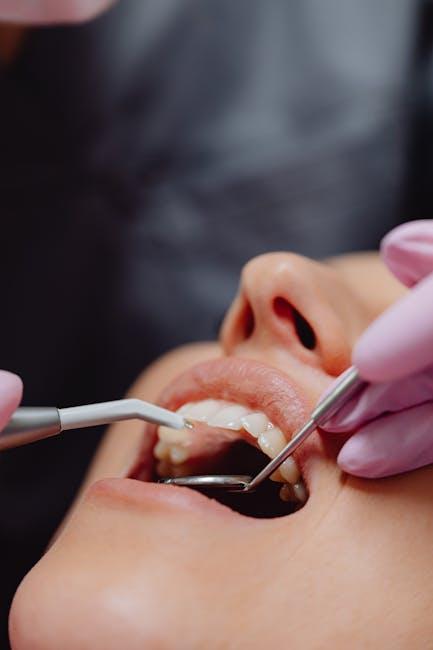
The Dental Medical Convergence Announces Featured Article – GlobeNewswire
The Dental Medical Convergence is making waves in the healthcare industry with its recent announcement of a featured article published on GlobeNewswire. This milestone highlights the rising importance of integrating dental and medical disciplines to improve patient outcomes and revolutionize the broader healthcare landscape.
Introduction to the Dental Medical Convergence
The concept of dental medical convergence represents a growing movement toward the collaboration between dentists, medical doctors, and allied health professionals. It aims to bridge the gap that traditionally separates oral health from systemic health, recognizing that the mouth is a critical window into overall well-being.
This convergence fosters multidisciplinary approaches that can transform disease prevention, early diagnosis, and comprehensive treatment strategies, significantly enhancing healthcare delivery.
About The Featured Article on GlobeNewswire
The featured article published on GlobeNewswire delves into the latest trends, research findings, and innovative practices emerging from the dental medical convergence space. It focuses on:
- The impact of dental-medical integration on chronic disease management.
- Breakthrough collaborative healthcare models.
- Technological advances that facilitate joint patient care.
- Policy and systemic changes encouraging multi-disciplinary teamwork.
The article serves as a rich resource for healthcare practitioners, policy makers, researchers, and anyone interested in the future of integrative healthcare models.
Why Dental Medical Convergence Matters
Oral health is often overlooked when addressing overall health risks, despite being intrinsically connected. Here are some compelling reasons why dental medical convergence is a healthcare priority:
- Improved Chronic Disease Outcomes: Conditions such as diabetes and cardiovascular disease have recognized links to oral health status. Integrating dental care helps manage these diseases more effectively.
- Early Detection of Systemic Diseases: Many systemic conditions manifest initially via oral symptoms. Collaborative care can lead to earlier diagnosis and intervention.
- Reduced Healthcare Costs: Proactive dental-medical collaboration can prevent costly complications and hospitalizations by managing health holistically.
- Enhanced Patient Experience: Patients benefit from coordinated care plans that address multiple health facets under one roof or through seamless referrals.
Key Benefits of Dental Medical Convergence
| Benefit | Description | Impact |
|---|---|---|
| Holistic Patient Care | Interdisciplinary management of patient health. | Improved treatment outcomes |
| Enhanced Communication | Better information sharing between providers. | Reduced errors & duplication |
| Early Disease Identification | Closer monitoring of oral-systemic health links. | Timely interventions |
| Cost Efficiency | Lower healthcare spending through preventive care. | Savings for patients & systems |
Practical Tips for Implementing Dental Medical Convergence in Healthcare Settings
Healthcare organizations looking to adopt dental medical convergence principles can start with some key practical steps:
- Foster Collaborative Networks: Build partnerships between dental clinics, primary care offices, and specialists to encourage referrals and shared care plans.
- Integrate Patient Records: Use electronic health records (EHR) systems capable of integrating dental and medical data for comprehensive patient histories.
- Pathway Development: Create clinical pathways that outline joint protocols for managing patients with interrelated medical and dental conditions.
- Continuous Education: Train providers on the oral-systemic connection and the benefits of integrated care.
- Patient Awareness: Educate patients on how oral health impacts their overall health to encourage proactive care.
Case Studies Highlighted in the Article
One of the standout features of the GlobeNewswire article is its presentation of real-world case studies where dental medical convergence has made a significant difference:
- Diabetes Management Program: A community health center integrated dental screenings into routine diabetes checkups, improving HbA1c control rates.
- Cardiovascular Risk Assessment: Collaboration between cardiologists and dentists for patients with periodontal disease helped reduce cardiac events.
- Oral Cancer Early Detection: Joint efforts in oncology and dentistry expedited diagnosis and treatment, improving survival rates.
First-Hand Experience: Insights from Healthcare Professionals
Healthcare providers have reported transformational experiences after embracing dental medical convergence, emphasizing:
- “Interdisciplinary teamwork enhances patient trust and compliance,” says Dr. Emily Clarke, a primary care physician involved in integrated care models.
- “Being able to share health records with medical colleagues helps us identify systemic issues sooner,” notes Dr. Marcus Lee, a practicing dentist.
These accounts underscore the tangible benefits and positive momentum driving dental medical convergence forward.
Conclusion
The Dental Medical Convergence’s featured article on GlobeNewswire shines a well-deserved spotlight on the vital shift towards integrated healthcare. As the lines between dental and medical care continue to blur, patients and providers alike stand to gain from more comprehensive, collaborative, and cost-effective approaches to health management.
For anyone invested in innovative healthcare solutions, the insights shared in this featured article are essential to understanding and embracing the future of patient-centered care. Stay tuned to GlobeNewswire and The Dental Medical Convergence platforms for ongoing updates, research, and success stories.


